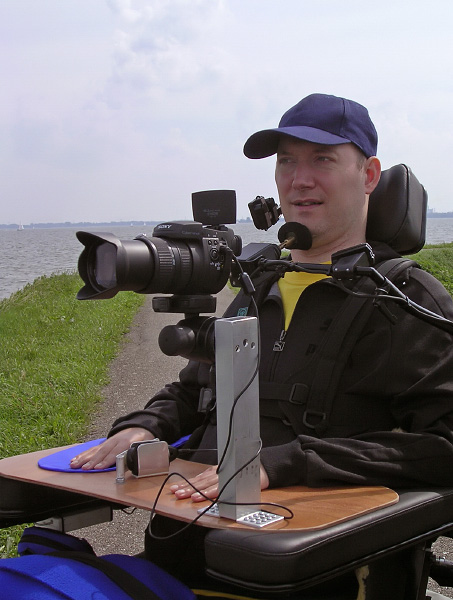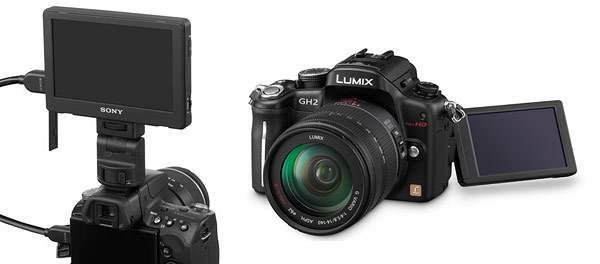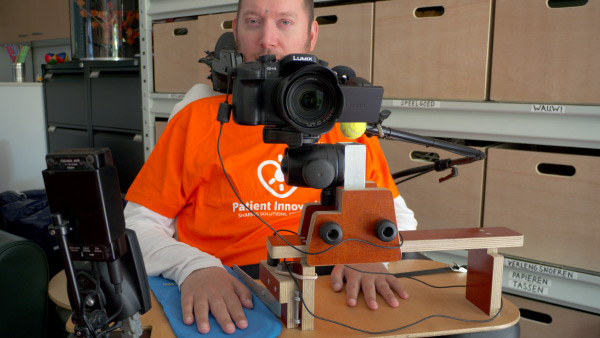Paralyzed Photographer
How to shoot photos and videos, while being almost completely paralyzed.
|

Spinal cord injury & photography?
Just a couple of years after finishing four years of photography school, the accident
happened. Is it still possible to be an active photographer while being almost completely paralyzed? That was one of many questions. First reaction was "no, of course not", because of for example:
- Not able to hold and control the camera with hands.
- Not able to look through the viewfinder.
That is just the tip of the iceberg, and photography is about way more than having a camera
and pusing its buttons. Although it does help if you have and can.
What more:
- working together with others.
- traveling to locations, getting there in time.
- and/or running a studio.
- maintaining the gear.
- choosing the best shots, and do the photoshop magic on them.
- when professional; find and serve the client.
- when professional; get more income than costs.
All these things are pretty impossible for me.
My options, time and energy are very limited & unpredictable.
Style and Gear
What gear you need depends on the style photography you're into. If you for example want to take pictures of real people and situations outside, you want a simple set you can work with without assistance. If you're into studio photography, you can become more of a director and let other people work on most of the gear. A good field/directors monitor is a very important gear there, so you can see what is happening on the image sensor.
Me personally; I like to work outside, using natural light, improvise in a realistic or near realistic settings. Thus I need a simple set.
So yes:
I am able to shoot pictures and video with little help, but I have to keep everything extremely simple.
First anolog years
In the first years after the accident, taking analog photos (1998) proved to be very frustrating. I made some portraits with the help of Peep Papa. But shooting with analog film didn't work for me, because:
- No control over the camera at all, and no view into the viewfinder.
- Very slow process: develop the film, get contact sheets, scan them, remove the dust..
Yes there were polaroids. Never liked working with them, and very expensive.
Frustrating all together, so I quit analog photography.
|

First digital years
In the beginning of 2006 photography changed because of the shift to digital, which gave new options to me. My first digital camera: the Sony DSC-R1, was the only photo camera at that time that had good image quality (10MP, RAW, medium size image sensor, very good lens, manual controls), a life view LCD monitor that can face in just about any direction, and the option to connect a remote to control the shutter. Kees Meinardi build the construction for me. With that I could see the LCD monitor, and "push the button" (by moving my shoulder, my arm moves against a force amplifying lever that presses on the button of a remote control). By driving my chin controlled wheelchair around, I can point the camera. The horizon is level, as long as the ground is level.
|

This construction gave me just enough control to take pictures again. |
|
6 examples of photo's I made this way
|
Check out the photos I made so far, in my Photography gallery
As digital cameras became and better, there came more cameras that could work for me!
These are things I need in a camera:
+ A remote controle that I can push with my shoulder-arm.
+
A LCD monitor/viewfinder that can turn towards my eyes.
+ High quality sensor and manual controls.
+
RAW files (extra important because I can not expose that precise)
+ Continues life view, which is present in a mirrorless cameras.
+ Good quality auto focus and auto exposure.
+ The possibility to connect a field monitor.
The Lumix GH2 (2010) was the second camera I could work with well, a big improvement, and now I could make high quality movies also!
|

After the
Lumix GH2, came version GH3 and GH4. The GH4 (2014) was a large improvement upon the GH2, especially because of the 4K video option. One thing though, is: the floor isn't level at most places, thus my wheelchair isn't level, thus my videos aren't level! But 4K video and a wide angle lens give me the option to level the video afterwards. The end result is 1K video, thus cropping a bit doesn't kill the image quality.
This is the latest settup (2015), build by Rob Liefting:
|

|











